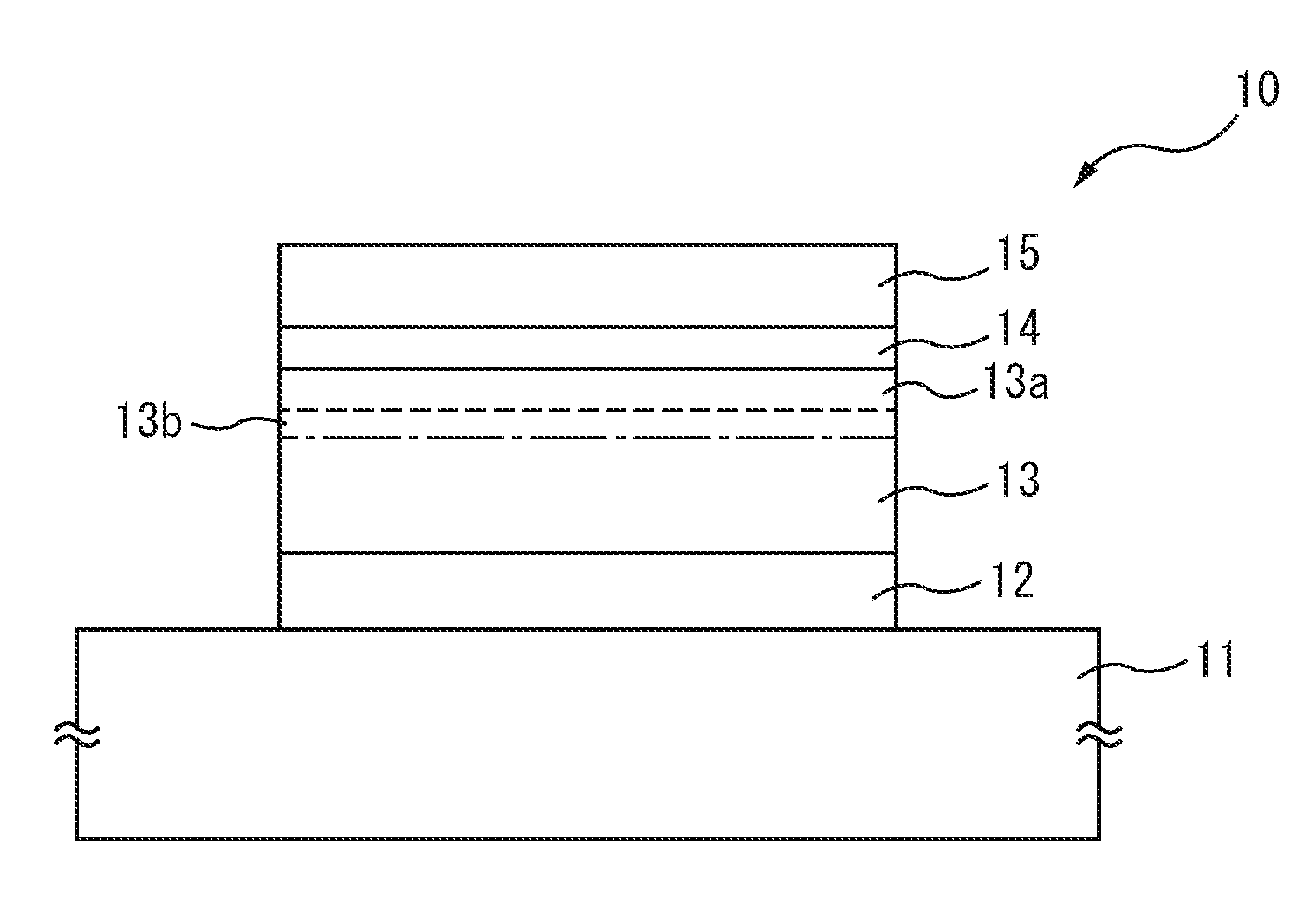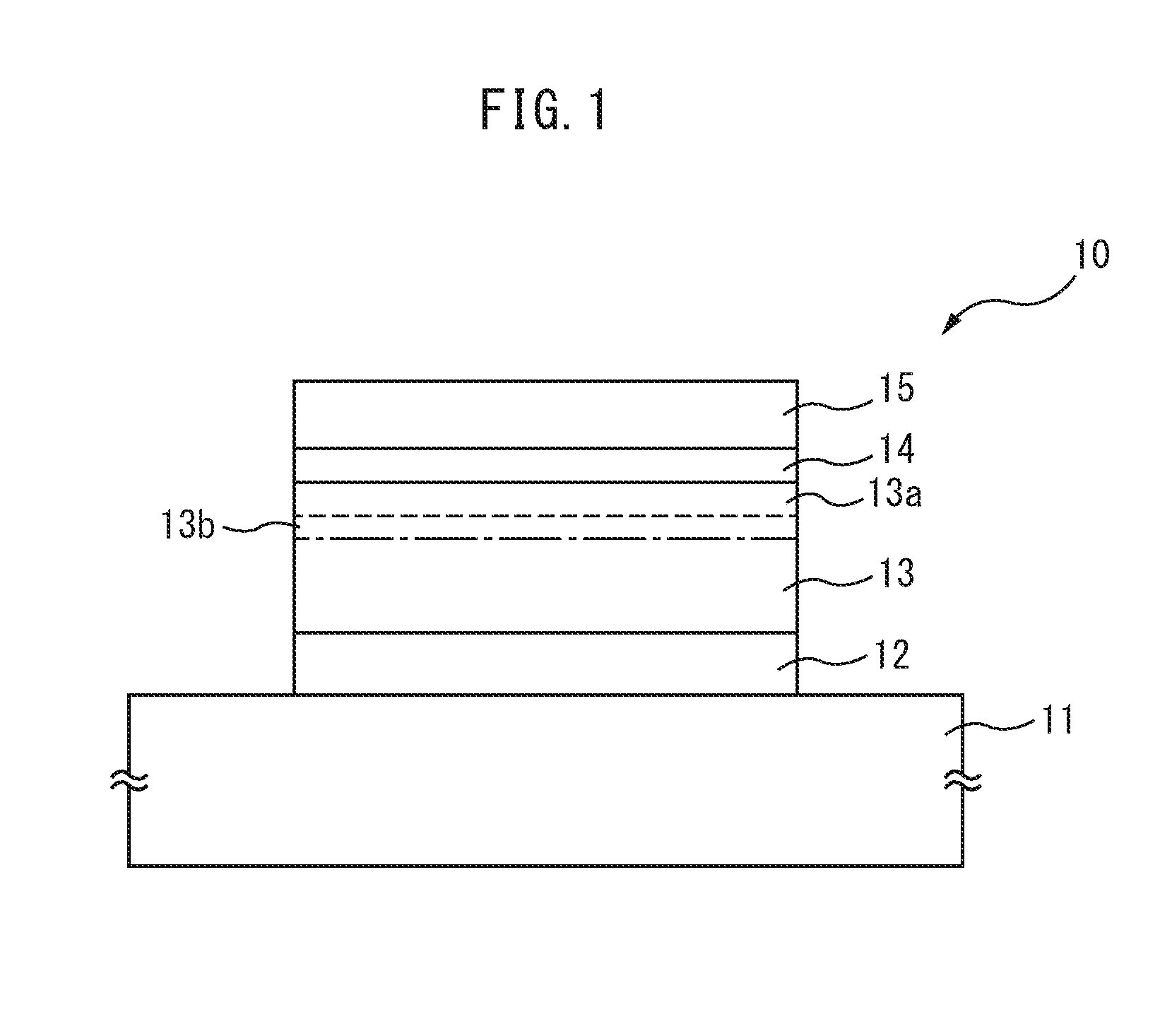Thin-film solar cell and production method for thin-film solar cell
- Summary
- Abstract
- Description
- Claims
- Application Information
AI Technical Summary
Benefits of technology
Problems solved by technology
Method used
Image
Examples
Embodiment Construction
[0092]The thin-film solar cell disclosed in the present specification will be further described below by way of working examples thereof. However, the scope of the present invention is not restricted thereto.
[0093]The thin-film solar cell of Example 1 was produced as described below. As the substrate 11, a glass substrate was used. The first electrode layer 12 was formed by a sputtering method using Mo.
[0094]The p-type light absorption layer 13 was formed by the above-described method (1). As a Group I element, Cu was used. As Group III elements, Ga and In were used and, as Group VI elements, Se and S were used. The p-type light absorption layer 13 was prepared by forming, as precursor films on the first electrode layer, first a CuGa film by a sputtering method, next a Cu film by a sputtering method and then an In film by a sputtering method. The resulting laminate of the thus formed precursor films was subjected to selenization and sulfurization. The buffer layer 14 was formed by a...
PUM
| Property | Measurement | Unit |
|---|---|---|
| Fraction | aaaaa | aaaaa |
| Thickness | aaaaa | aaaaa |
| Atomic number | aaaaa | aaaaa |
Abstract
Description
Claims
Application Information
 Login to View More
Login to View More - R&D
- Intellectual Property
- Life Sciences
- Materials
- Tech Scout
- Unparalleled Data Quality
- Higher Quality Content
- 60% Fewer Hallucinations
Browse by: Latest US Patents, China's latest patents, Technical Efficacy Thesaurus, Application Domain, Technology Topic, Popular Technical Reports.
© 2025 PatSnap. All rights reserved.Legal|Privacy policy|Modern Slavery Act Transparency Statement|Sitemap|About US| Contact US: help@patsnap.com



